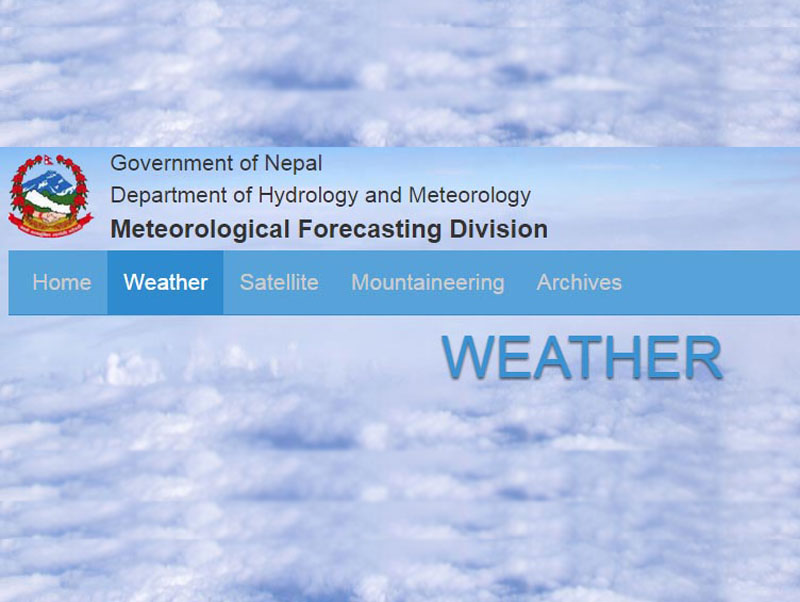DoHM to upgrade weather forecasting system
The Department of Hydrology and Meteorology is all set to establish a radiosonde station on the premises of Tribhuvan University in Kirtipur in a move to upgrade the current short-range weather forecasting system and make weather prediction more reliable.
The radiosonde station, which is likely to come into operation by April 2017, will have hydrogen generator and radiosonde balloons to obtain atmospheric data from the upper air.
The department and the Tribhuvan University jointly organised a high-level meeting two weeks ago and decided to set up radiosonde station on the premises of Atmospheric Research Laboratory.
Dr Rishi Ram Sharma, director general at DoHM, said the department aims to operate the station by the end of April 2017. “We are in the process of importing hydrogen generator,” said Sharma, adding, “Once the station comes into operation, Nepal will have access to data that would make weather forecasting system up to 100 per cent accurate.”
While almost all countries in the world have applied High Performance Computer Modeling System that gives weather forecasts that are up to 100 per cent accurate, Nepal has been relying on just 24-hour short-range forecasting system that at best gives 75 per cent of accuracy.
Three types of weather prediction systems are widely used to predict weather at both local and global levels. Europe, America, Australia, China and most other countries use long-range weather prediction system that employs High Performance Computer Modeling System to collect data.
Long-range systems forecast weather for up to three months. Medium-range prediction systems forecast weather for up to ten days and short-range prediction systems forecast weather for three days.
According to the department, the station would produce hydrogen from water as the country does not have hydrogen to fuel the flights of balloons.
The radiosonde is attached to a hydrogen-filled balloon, generally called a weather balloon, and the balloon lifts the radiosonde to altitudes exceeding 115,000 feet. During the radiosonde’s ascent, it transmits data on temperature, atmospheric pressure, and humidity to a sea, air, or land-based receiving station.
Chief of Meteorological Forecasting Division at Tribhuvan International Airport Jagadishor Karmacharya said they had no option other than producing hydrogen through electrolysis.
“At first we had held talks with Himal Gas. Then we discussed the possibility of importing the hydrogen from international gas suppliers and also explored other options. But we failed in all our attempts.”
As per the cost analysis, hydrogen generator costs around Rs 50 million to 60 million and per balloon around Rs 20,000. The department plans to fly the balloons twice a day — in the morning and in the evening.
According to the department, India donated equipment to run the radiosonde station for a year through South Asian Association for Regional Cooperation Storm Project three months ago.
The equipment have been kept at TIA-based Meteorological Forecasting Division.
According to the department, three balloons carrying radiosonde GPS transmitters that transfer data to ground station will be flown every day, one each from Dharan, Kathmandu and Surkhet at 00:00 GMT (05:45 am Nepal time) to collect data on atmospheric pressure, temperature, and humidity.






